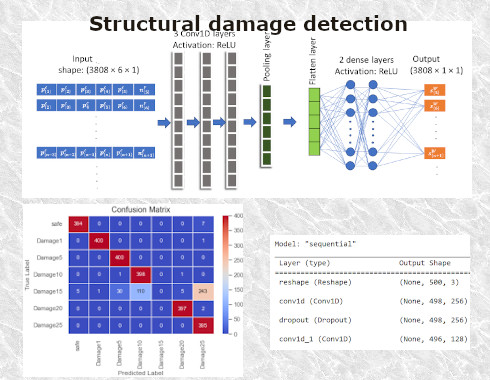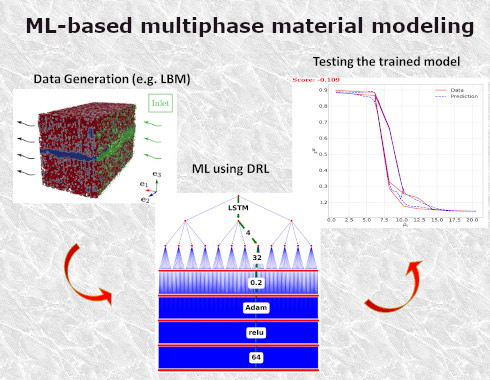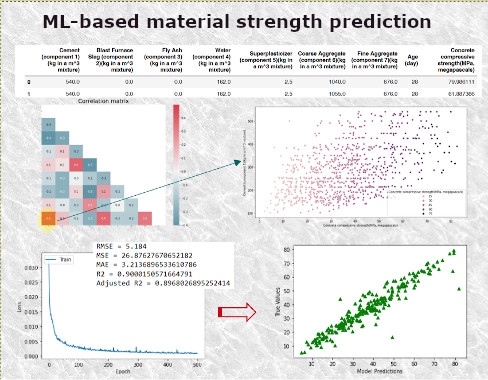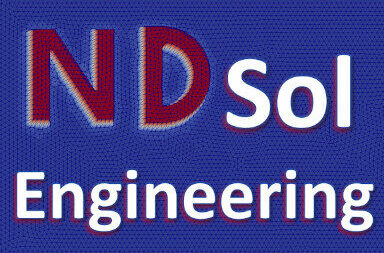Data- and AI-based solutions
Data- and AI-based approaches in engineering can be applied to analyze and model complex systems and processes. Using Artificial Neural Networks (ANN) and digital twin technology, they can potentially improve the safety, performance, and efficiency of civil and mechanical engineering systems. They can help in reducing costs and minimize the environmental impacts of these systems.
Some examples of how ANN can be used in civil engineering include:
- Damage detection and assessment: Using ANN helps analyze data from inspections or from sensors, identify areas of damage or deterioration in a structure or system, and assess the extent of the damage.
- Predictive modeling: Using Data-driven AI approaches to predict the behavior of structures and systems under different loads and conditions, such as predicting the response of bridges or buildings to earthquakes or wind loads.
- Model updating and optimization: AI approaches can be applied to update the numerical models of a structure based on data from monitoring. These data can also be used by machine learning algorithms to figure out the optimal model material parameters.
- Predictive maintenance and smart infrastructures: Predictive maintenance and smart infrastructures can be used together to improve the overall performance of engineering projects. Predictive maintenance can be used to predict when maintenance or repairs will be needed in smart infrastructure systems, and smart infrastructures can be used to optimize the operation of these systems and to improve the efficiency and safety of these systems.
Exemplary Tools





Exemplary Applications
Machine learning within multi-scale modelling
Machine learning is a helpful tool in the context of multi-scale modelling. It allows "deep" recurrent neural networks to be formed to generate an objective, path-dependent, anisotropic ML material model. Furthermore, the generation of data-based ML material models allows the consideration of microstructural information that cannot be captured in conventional material models. Deep Reinforcement Learning can also be used as a tool for the automatic determination of the optimal ND meta-parameters in connection with the fulfilment of a predefined condition.
Application to composite materials Kristallplastizität Ref. (Open Access Ref.)
Application to porous media Ref. (Open Access Ref.)
Application to composite materials Verbundwerkstoffe Ref. (Open Access Ref.)


Machine Learning for Structural Health Monitoring
Structural Health Monitoring (SHM) is an important tool for ensuring the safety and reliability of structures. NDSOL Engineering uses advanced ML tools to detect structural damage as part of SHM. By analyzing sensor data, our customized algorithms can accurately identify patterns indicative of damage. This enables early detection of defects and improves the life and safety of structures. This approach can also help to significantly reduce maintenance costs.
Details in Project card
ML-based multiphase material modeling
Supervised machine learning via an artificial neural network (ANN) has gained significant popularity for many applications that involve multiphase flow and poromechanics. For unsaturated poromechanics problems, the multi-physics nature and the complexity of the hydraulic laws make it challenging to design the optimal setup, architecture, and hyper-parameters of the deep neural networks. Utilizing deep reinforcement learning (DRL) is a practical option to automatically discover optimal neural network settings that maximize a pre-defined performance metric for the machine learning constitutive laws. An example to this is the application to generate ML-based retention model.


ML-based material strength prediction (e.g. concrete)
This project aims at demonstrating the capability of machine learning to predict the compressive strength of high-performance concrete based on 8 input features. The exploratory data analysis (EDA) shows a strong correlation between the amount of Cement (kg/m^3 mixture) and Compressive strength (MPa), which is more dominant over the other features. Comparing the performance (accuracy and training speed) of three different Machine Learning approaches (MLP, XGBoost, and Linear Regression) shows an outperforming of XGBoost, whereas MLP and XGBoost have comparable accuracy. The data is taken from the literature.
Details in Project card
